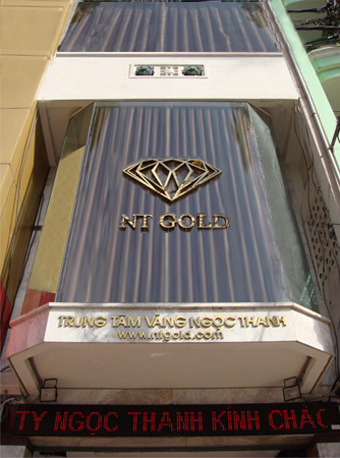The facility at Narita Airport, the nation’s biggest international gateway, will have dedicated customs and immigration counters, allowing travelers to avoid the queues. The center will cost 250,000 yen ($3,040) per plane, said Hiroaki Suda, a spokesman for state-owned Narita International Airport Corp. There will be 18 parking spaces.
“We want to prepare ourselves so business leaders from overseas can come to Japan, adding to the country’s growth,” said Kunihiko Muroi, a parliamentary secretary at the transport ministry. “We also want Japan’s young small and medium-sized business owners to be flying around the world.”
Japan has also expanded Tokyo’s two airports to boost international flights, begun building new roads to ease congestion and drawn up plans to merge stock exchanges to help the city compete with Singapore, Hong Kong and Shanghai. The terminal may also boost the use of business jets in Japan, where the fleet totaled 55 at the end of 2010, compared with 12,074 in the U.S., according to the Japan Business Aviation Association.
“We have high hopes for the new terminal,” said Junichi Nagano, president of Tokyo-based business-jet operator Japan Jet Charter Co. “It’s a big breakthrough for Japan’s gateway.”
The company will add an additional plane by the end of the year, as demand for business jetsfrom overseas, such as China, grows, he said. That would raise the operator’s fleet to four.
Terminal Two
The new center is located about 100 meters from the plane- landing spots at Narita’s terminal two. It’s opening alongside wider expansion work at the airport that has boosted the total annual capacity to 250,000 takeoffs and landings a year from 235,000. That will rise to 270,000 by the end of March 2013, Kosaburo Morinaka, Narita Airport’s president, said yesterday.
“Access to airports and landing slots in Tokyo has always been a problem,” said Ernie Edwards, president of planemaker Embraer SA (EMBR3)’s executive-jet division. By contrast, Hong Kong, Singapore, Shanghai and Beijing all already have dedicated business-jet centers.
The facility at Narita, about 70 kilometers (43 miles) from downtown Tokyo, will be only the fourth dedicated business-jet terminal in Japan, following two in the Nagoya area and one in the western city of Kobe, according to the Japan Business Aviation Association.
‘Big Step’
“This was a problem in Japan, where general aviation wasn’t a priority,” Francois Chazelle, Airbus SAS’s vice president for corporate jet, said at a Shanghai business-jet show this week. The new Narita facility “is a big step.”
Tokyo’s airports had 2,573 business jet take-offs and landings in 2011, according to figures from Japan’s transport ministry. That was little changed from a year earlier, even after the March 2011 tsunami and nuclear-power crisis.
There were about 5,000 business-jet movements at Tokyo, Nagoya and Osaka airports last year. A total of 2,387 flights nationwide involved flights to or from the U.S. South Korea was the second-most popular destination while China ranked third.
Planemakers expect business-jet use in China to surge, as rising wealth spurs purchases. Cessna Aircraft Co. and Embraer both have plans to build aircraft in the country because of anticipated local demand. The country’s fleet may increase to 2,470 planes by 2030 from 150 in 2010, according to Montreal- based Bombardier Inc. (BBD/B)
Reaching Downtown
While the new Narita facility will ease arrival for business-jet travelers, it will still take at least 30 minutes to reach downtown even with a helicopter. For that reason, operators are also pushing for a dedicated terminal at Haneda airport, which is located near the heart of the city.
“We should have business-jet facilities at Haneda, not just Narita,” said Kazunobu Sato, vice chairman of the Japan Business Aviation Association. “We’ll keep pushing for more take-off and landing slots.”
Tokyo has fallen behind other Asian cities as a center for regional investment. Singapore and Hong Kong are both more competitive cities, according to an Economist Intelligence Unit report. The Japanese capital was also placed seventh among 15 cities in terms of attractiveness for an Asian headquarters in a survey last year by the European Chamber of Commerce in China. Shanghai, Hong Kong and Singapore took the top three spots.
Japan is also trailing in terms of growth. Its economy will likely expand 1.5 percent this year, about half the pace predicted in both Hong Kong and Singapore, according to economist forecasts compiled by Bloomberg. China is expected to expand 8.3 percent.
The new Narita facility may help Tokyo close the gap on its rivals and also play a small part in reviving the nation’s economy by easing travel for investors, said airport President Morinaka.
“We built the business terminal for people who value their time and security highly,” he said. “We want Japan to regain its strength.”
To contact the reporters on this story: Chris Cooper in Tokyo at ccooper1@bloomberg.net; Kiyotaka Matsuda in Tokyo at kmatsuda@bloomberg.net.
To contact the editor responsible for this story: Neil Denslow at ndenslow@bloomberg.net.
| TIME | |||||
|---|---|---|---|---|---|
| Sydney | Tokyo | Ha Noi | HongKong | LonDon | NewYork |
| Prices By NTGOLD | ||
|---|---|---|
| We Sell | We Buy | |
| 37.5g ABC Luong Bar | ||
| 8,713.30 | 7,915.30 | |
| 1oz ABC Bullion Cast Bar | ||
| 7,275.60 | 6,499.60 | |
| 100g ABC Bullion Bar | ||
| 23,158.60 | 20,771.60 | |
| 1kg ABC Bullion Silver | ||
| 4,479.00 | 3,682.00 | |
Powered by: Ngoc Thanh NTGold
- Online: 205
- Today: 1049
- Total: 6669786














